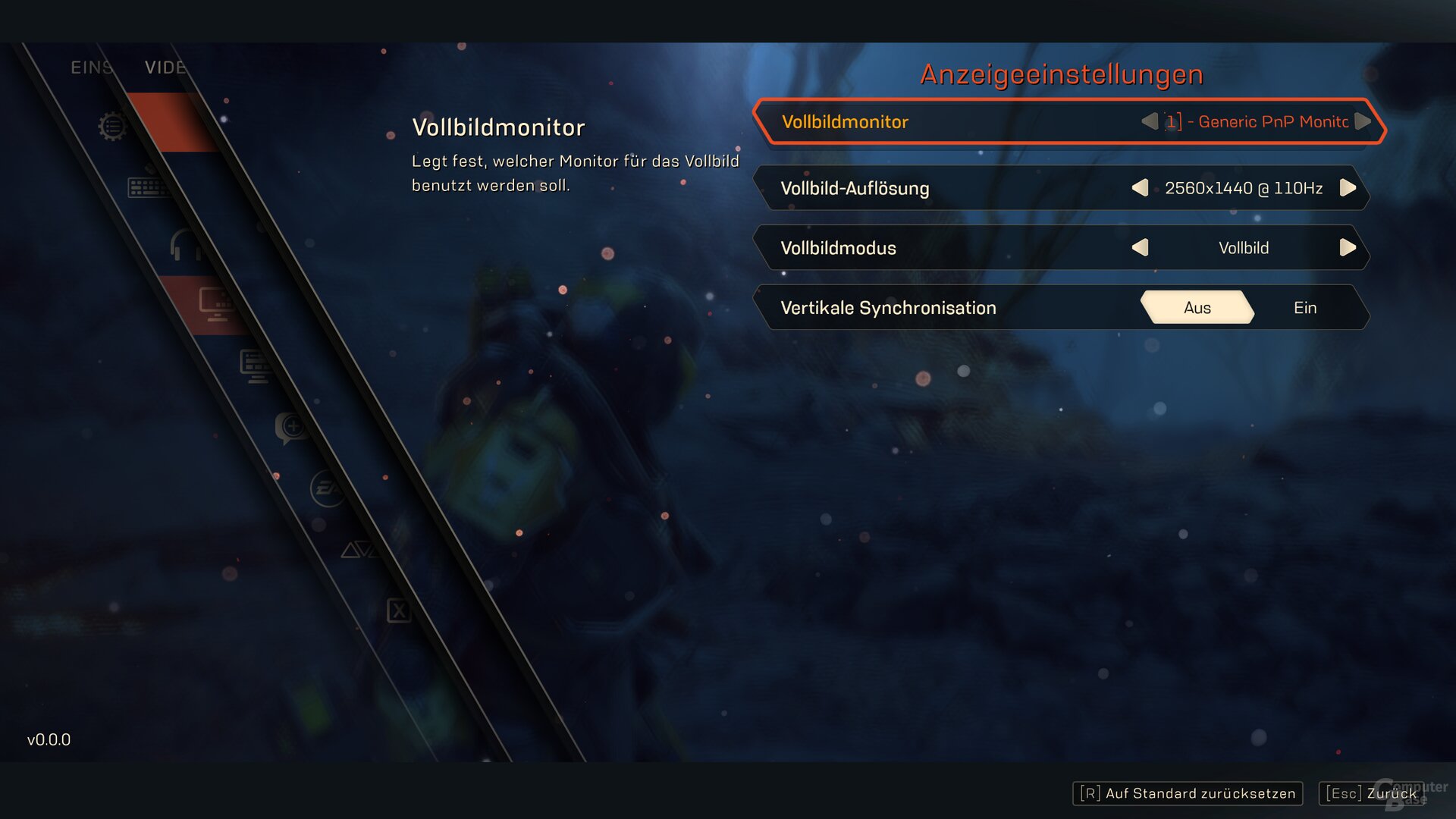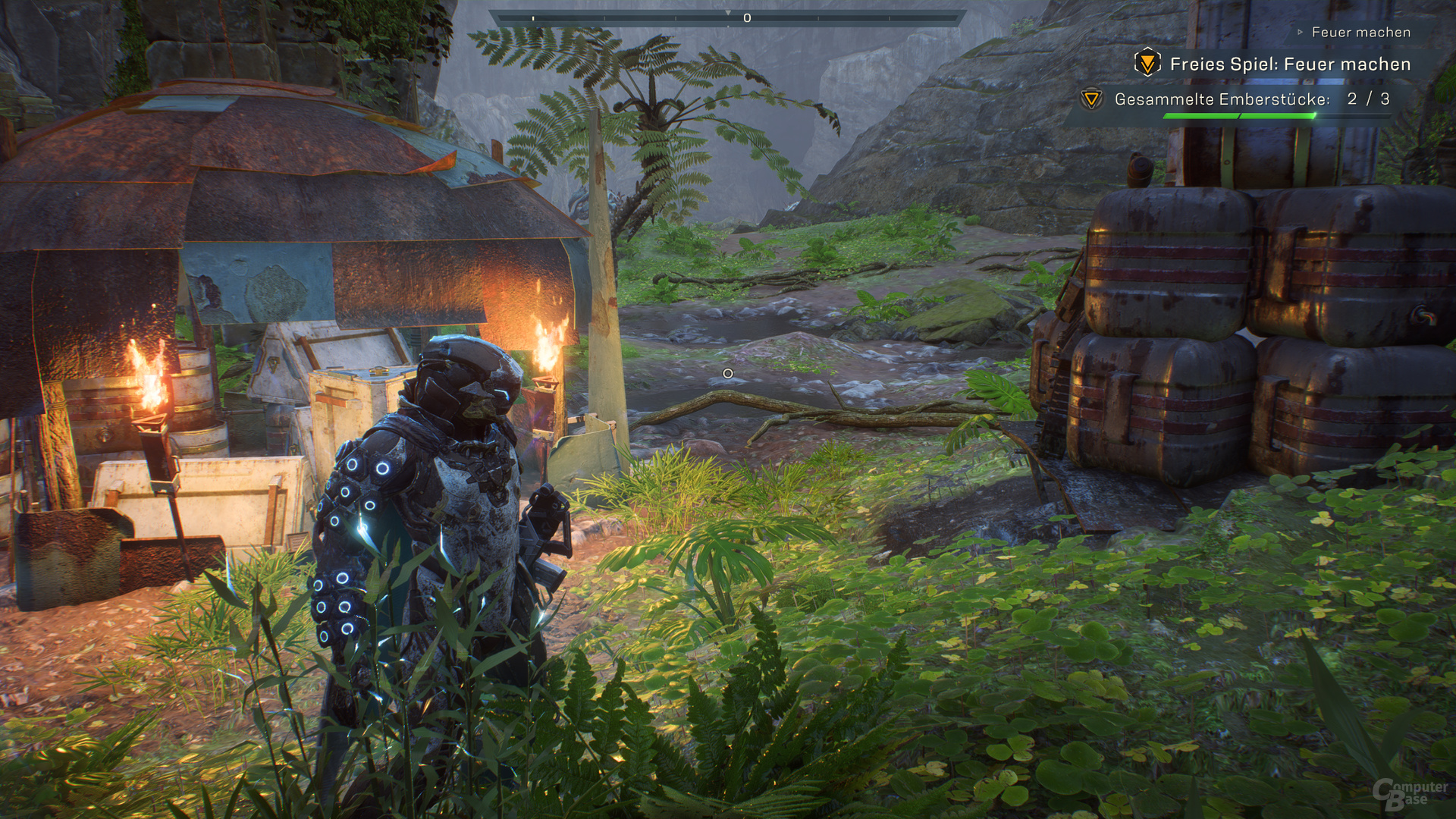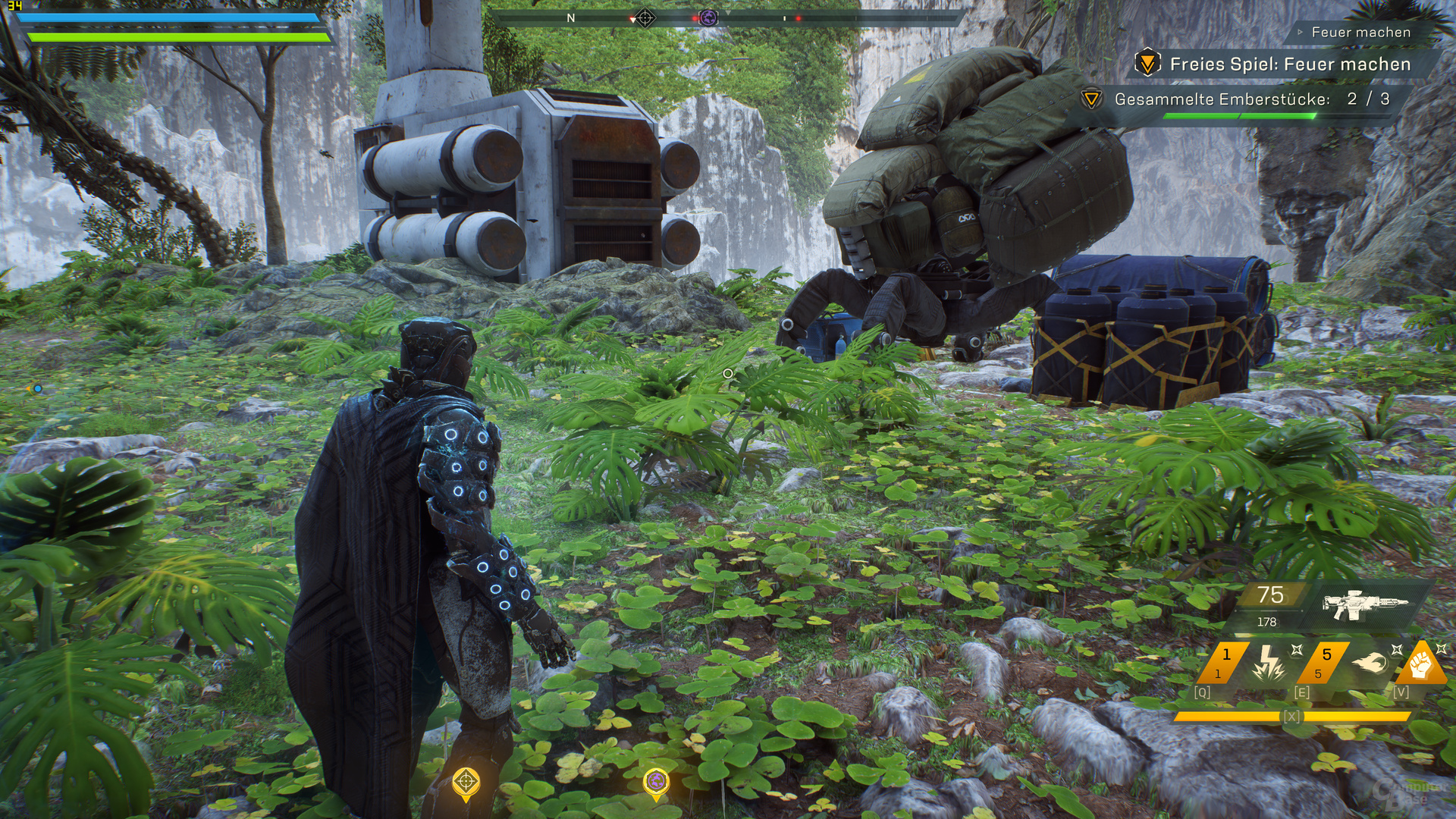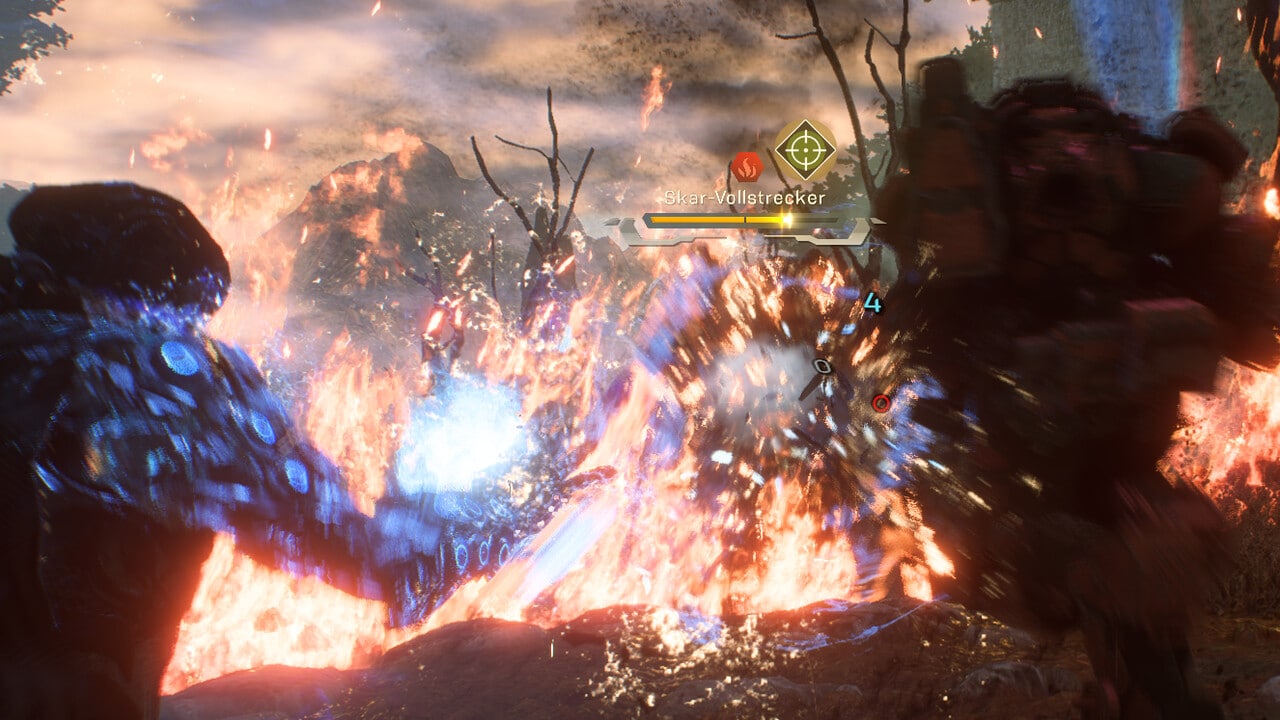– Anthem is the latest large-scale production of organic goods that has to heal the wounds of Mass Effect: Andromeda. Visually, the editorial staff of the graphics can give a positive grade in the test. However, this comes at a price: The Frostbite engine requires significantly faster GPUs in this game than in Battlefield V.
Anthem is very nice with Frostbite, but often at the store
After the mediocre and much-discussed Mass Effect: Andromeda (test), Anthem is the next major project from Bioware. Mass Effect: Andromeda is certainly remembered by many players with the initially grotesque facial animations. Technically, the new title has no doubt to heal wounds.
Like almost all games by publisher EA, Anthem relies on the Frostbite engine that DICE actually developed for Battlefield. And the graphics benefit significantly: Anthem has become a very nice game. The foresight is enormous and in connection with the always good lighting at Frostbite the game looks simply impressive in places. There are various particle effects, good textures and some other optical delicacies.
Frostbite could do a little more
However, the graphics could be even better. However, Bioware does not list all the features that Frostbite actually offers. For example, DirectX 12 does not support the game, but only DirectX 11. This means that ray tracing is also automatically missing. And the face animations look better, but remain the weakest part of the game.
In addition, Anthem loads continuously (and sometimes quite extensively). From the port to the outside world: charging. In the next cave: load. Out again: load. That should be different in 2019. That loading should stay that way, but hopefully patches will change the loading time.
Anthem participates in Nvidia’s GameWorks program
Anthem participates in Nvidia’s GameWorks program: the well-known HBAO cover has found its way into the game. In addition, Anthem will support AI upscaling DLSS in the future. When the Turing technology and in what quality should be integrated into the game is not yet unknown.
The latest Ubisoft games now have an exemplary options menu on the PC and that of Battlefield V is also impressive. The counterpart of Anthem, however, is not very spectacular. After all: The graphic options can be set in detail. That was it already. There is no downsampling, no upsampling, no FPS limiter, no dynamic resolutions, no VRAM display, no sample screenshots and no other special features.
- The Anthem graphics menu
image 1 Of 3

The settings “Low”, “Medium”, “High” and “Ultra” are available to the player. Ultra does not correspond to the maximum settings, because the surrounding cover can be turned up by another option.
The visual effects of each individual stage are clearly visible. If you choose high instead of ultra, you have to be satisfied with less vegetation and apparently less tessellation. At least some floor surfaces with the second highest level appear less three-dimensional. The changes do not bother, with high it is good to play games without disturbing the optics.


That then changes to medium. Some surfaces are really flat here, the surrounding masking is no longer effective and the textures become blurred. The real problem is only visible in motion: The LOD works very aggressively on medium and the visibility is significantly reduced, so that objects pop continuously in front of the player. On low the problems become even bigger. The Low and Medium settings should therefore only be used if there is no other way to change the performance.
If you switch from Ultra to High, you get 13 percent more pictures per second on a Radeon RX Vega 64 and 14 percent on a GeForce RTX 2070. The middle preset then brings a significantly greater boost of 40 or 42 percent and the lowest setting increases the frame rate by another 15 percent each. This means that performance in Anthem can be improved by 81 percent on an AMD graphics card, and 87 percent on an Nvidia counterpart.
Graphics presets in Anthem
- Low
- medium
- High
- Ultra
If you change the surrounding concealment from HBAO to HBAO full, you simply have a somewhat more pronounced concealment in interior levels. In contrast, the differences in outdoor levels are much larger, because large parts of the vegetation only get ambient occlusion with HBAO Voll. On the one hand, the effect with HBAO Full is sometimes too exaggerated. On the other hand, the graphics benefit from the fact that some elements are only included with HBAO Voll. It is a matter of taste whether the option should be used.


In the test sequence, HBAO Voll only costs two percent on the GeForce RTX 2070, on the Radeon RX Vega 64 it is a little more with four percent. In other sequences, the loss can also be twice as high. HBAO versus SSAO costs eight percent in speed, regardless of the graphics card. HBAO is visually the better choice.
Nvidia GameWorks in Anthem
- SSAO
- HBAO
- HBAO full
As anti-aliasing, TAA and “Ultra” are available in Anthem. Ultra is probably also TAA; however, the image is apparently sharpened a little later. Because with TAA there is a slight blurring even in higher resolutions, with Ultra, on the other hand, it no longer exists in WQHD. However, since the image does not become more restless, Ultra is the anti-aliasing of choice. Speaking of calm: the anti-aliasing cannot prevent Anthem from flickering regardless of the resolution. Even in Ultra HD, the picture calm is only mediocre. However, aliasing is still limited. Especially in higher resolutions than Full HD, the flickering surfaces no longer interfere.
On the next page: test series, test system and graphics settings
















